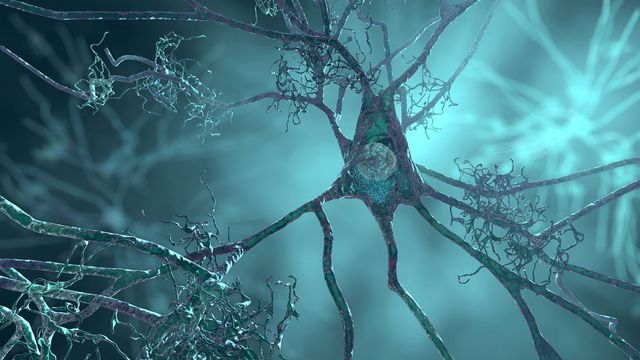Unraveling Kawasaki Disease: Evidence Points To A Novel Respiratory Virus

Table of Contents
The Enigma of Kawasaki Disease
Kawasaki disease is a systemic vasculitis, primarily affecting children under the age of five. Its presentation is characterized by a constellation of symptoms that can vary in severity. The illness typically begins with a high fever lasting five days or more, followed by other characteristic signs. If left untreated, Kawasaki disease can lead to serious complications, most notably coronary artery aneurysms, which can cause heart damage and even death. The unpredictable nature of KD, its varied presentation, and the lack of a definitive etiology make diagnosis and treatment challenging. This uncertainty contributes to significant anxiety among parents and healthcare providers alike. Understanding the root cause of Kawasaki disease is crucial for improving patient outcomes and reducing the risk of long-term cardiovascular complications.
- High fever lasting 5 days or more: This is often the first and most noticeable symptom.
- Bilateral conjunctival injection: Redness and swelling of the whites of the eyes.
- Changes in the lips and oral cavity (strawberry tongue): Inflammation and redness of the lips and tongue, often with a characteristic "strawberry" appearance.
- Rash: A widespread, polymorphous rash affecting the trunk and extremities.
- Swollen hands and feet: Edema (swelling) in the hands and feet.
- Cervical lymphadenopathy: Swollen lymph nodes in the neck.
- Cardiac involvement (coronary artery aneurysms): This is the most serious complication of KD, potentially leading to long-term heart problems.
The Case for a Novel Respiratory Virus
Increasing evidence suggests a strong link between respiratory infections and the onset of Kawasaki disease. Several studies have observed an increased incidence of KD following outbreaks of respiratory viruses, hinting at a potential causative role. Researchers are actively investigating various viral strains and patterns in KD patients to pinpoint a possible culprit. While no single virus has been definitively identified as the cause, the accumulating data points towards a viral etiology. The field of viral metagenomics, studying the entire viral community within a sample, is providing new insights into the complex interplay of viruses and the development of Kawasaki disease.
- Increased incidence of KD following respiratory viral outbreaks: This correlation strongly suggests a link between viral infections and the development of KD.
- Detection of specific viral RNA/DNA in KD patient samples: Studies have identified potential viral candidates, including human herpesvirus 6 (HHV-6) and others, though more research is needed to confirm their causal role.
- Correlation between specific viral infections and increased severity of KD: Some viral infections might be associated with more severe cases of Kawasaki disease.
- Research on the viral microbiome: Investigating the entire viral community present in KD patients is vital to unravel the complexities of the disease.
Challenges in Identifying the Specific Virus
Despite promising leads, definitively identifying the causative virus for Kawasaki disease remains challenging. Several factors contribute to this difficulty:
- Difficulties in isolating and culturing the potential virus: Some viruses may be difficult to grow in laboratory settings.
- The possibility of co-infections masking the primary causative agent: The presence of multiple viruses might obscure the identification of the primary culprit.
- The challenges of distinguishing between viruses associated with KD and those simply present in the general population: It’s crucial to differentiate between viruses that play a causal role and those that are simply coincidentally present.
Implications for Prevention and Treatment
Identifying the causative virus for Kawasaki disease would revolutionize prevention and treatment strategies.
- Development of targeted antiviral therapies: Once the virus is identified, specific antiviral drugs can be developed and tested for efficacy.
- Development of vaccines to prevent infection: A vaccine could significantly reduce the incidence of KD.
- Improved early detection through viral screening: Rapid viral testing could allow for earlier diagnosis and more timely treatment.
- Potential for personalized treatment based on identified viral strain: Treatment could be tailored based on the specific virus causing the disease.
Future Research Directions
Future research efforts should focus on several key areas to further elucidate the role of respiratory viruses in Kawasaki disease:
- Genome-wide association studies to identify genetic susceptibility factors: Understanding genetic predispositions could help identify individuals at higher risk.
- Longitudinal studies to track viral infections and KD development: Observing patients over time can reveal crucial connections between viral infections and disease onset.
- In-depth analysis of the immune response in KD patients to various viruses: Understanding how the immune system responds to potential viral triggers is critical.
Conclusion
The mystery surrounding Kawasaki disease is slowly unraveling. Emerging evidence strongly suggests that a novel respiratory virus may be a key player in its etiology. While further research is crucial to definitively identify the causative agent, this new understanding holds immense promise for developing effective prevention and treatment strategies. Continued investigation into the role of respiratory viruses in Kawasaki disease is paramount for improving patient outcomes and ultimately conquering this enigmatic illness. Stay informed about the latest research on Kawasaki disease and its potential viral link.

Featured Posts
-
 Kelebihan Dan Kekurangan Kawasaki W175 Cafe Motor Retro Modern
May 30, 2025
Kelebihan Dan Kekurangan Kawasaki W175 Cafe Motor Retro Modern
May 30, 2025 -
 Sierra Leone Immigration Chief Sacked Details Emerge
May 30, 2025
Sierra Leone Immigration Chief Sacked Details Emerge
May 30, 2025 -
 Bts 2025 Quand Auront Lieu Les Epreuves Et La Publication Des Resultats
May 30, 2025
Bts 2025 Quand Auront Lieu Les Epreuves Et La Publication Des Resultats
May 30, 2025 -
 Mozarts Clavierkonzert Kommt Nach Augsburg Musikgeschichte Zum Anfassen
May 30, 2025
Mozarts Clavierkonzert Kommt Nach Augsburg Musikgeschichte Zum Anfassen
May 30, 2025 -
 Measles Cases Rise In Israel Linked To Texas Outbreak
May 30, 2025
Measles Cases Rise In Israel Linked To Texas Outbreak
May 30, 2025
